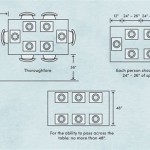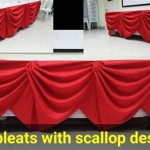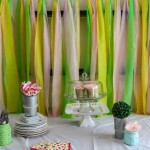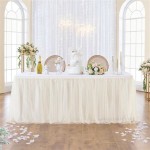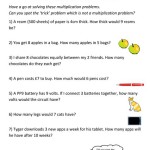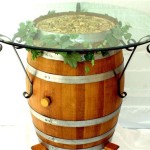How To Build A Baby Changing Table Dresser With Drawers
Combining functionality and aesthetics, a baby changing table dresser with drawers offers a valuable storage solution and a dedicated space for diaper changes in a nursery. Constructing such a piece of furniture allows for customization regarding size, style, and materials, ensuring it seamlessly integrates with the nursery's decor and accommodates specific needs. This article provides a detailed guide on how to build a baby changing table dresser with drawers, outlining the necessary materials, tools, and steps involved.
Before embarking on the construction process, thorough planning is essential. This involves determining the dimensions of the dresser, the number of drawers, and the overall design. Consider the available space in the nursery, the height that is comfortable for changing a baby, and the desired aesthetic. A detailed blueprint or sketch will serve as a roadmap throughout the build, preventing errors and ensuring accurate execution. Furthermore, selecting the appropriate materials is crucial for both durability and safety. Solid wood is a preferred option for its strength and longevity, while plywood or MDF can be used for less critical components. Ensure that all materials are non-toxic and free from harmful chemicals, especially as they will be in close proximity to a baby.
The following sections will delve into the specific steps required to construct a baby changing table dresser with drawers, emphasizing safety considerations and offering practical tips for a successful project.
Key Considerations Before You Begin
Before starting construction, several key elements must be considered to ensure the project meets both functional and safety requirements. These considerations influence the design, material selection, and overall construction process.
First, safety is paramount. The changing table must be stable and secure, preventing tipping or wobbling. All edges and corners should be rounded or covered with soft edging to prevent injuries. The changing area needs a raised border on all sides to prevent the baby from rolling off. Consider incorporating safety straps for added security during diaper changes. Carefully research and select non-toxic finishes and adhesives, as babies are prone to putting things in their mouths. Ensure all screws and hardware are countersunk to eliminate any sharp protrusions.
Second, ergonomics play a vital role in user comfort. The height of the changing table should be appropriate for the primary caregiver to avoid back strain. The drawers should be easily accessible and spacious enough to store essential baby supplies, such as diapers, wipes, and clothing. Consider the drawer depth and placement to optimize storage and accessibility. A comfortable reach to all supplies minimizes the need to move away from the baby during a diaper change.
Third, aesthetics are important, allowing the dresser to blend seamlessly with the nursery décor. Choose a design that complements the existing furniture and color scheme. Consider the style of the drawer fronts, the finish of the wood, and the hardware used. Paint or stain the dresser in a non-toxic color that coordinates with the nursery. Adding decorative elements, such as knobs or pulls, can enhance the overall appearance of the dresser.
Step-by-Step Construction Guide
This section outlines the detailed steps involved in constructing a baby changing table dresser with drawers. Each step is crucial to achieving a safe and functional finished product.
Step 1: Cutting the Wood: Using the pre-determined measurements from the blueprint, cut all the necessary pieces of wood. This includes the sides, top, bottom, back, and drawer components. Employ a circular saw or table saw for precise cuts. Ensure that all cuts are square and accurate, as any discrepancies can affect the stability and appearance of the dresser. Sand all cut edges smooth to prevent splinters and ensure a clean finish. Label each piece of wood according to its function for easy identification during assembly.
Step 2: Assembling the Dresser Frame: Begin by assembling the sides, top, bottom, and back pieces to form the main frame of the dresser. Use wood glue and screws to securely join the pieces together. Ensure that the corners are square using a carpenter's square. Clamps can be used to hold the pieces in place while the glue dries. The back panel can be made from plywood or MDF and attached using nails or staples. This panel provides additional stability to the dresser frame.
Step 3: Building the Drawers: Construct the drawers using the pre-cut drawer components. Assemble the drawer boxes using wood glue and screws or nails. Ensure that the drawer boxes are square and the corners are tightly joined. Attach the drawer fronts to the drawer boxes using screws. Consider using adjustable drawer slides for easy installation and smooth operation. The drawer slides should be installed according to the manufacturer's instructions. Test the drawer fit within the dresser frame to ensure they slide smoothly.
Step 4: Creating the Changing Table Top: The changing table top should be securely attached to the dresser frame. Build a raised border around the perimeter of the top to prevent the baby from rolling off. The border can be constructed from wood and attached using wood glue and screws. Ensure that the border is smooth and free from sharp edges. Consider covering the changing table top with a waterproof material for easy cleaning. A changing pad can be placed on top of the waterproof material for added comfort.
Step 5: Sanding and Finishing: Thoroughly sand the entire dresser to create a smooth surface for finishing. Start with a coarse grit sandpaper and gradually move to a finer grit. Remove all sanding dust before applying the finish. Apply a non-toxic paint or stain to the dresser according to the manufacturer's instructions. Multiple coats may be necessary to achieve the desired color and finish. Allow each coat to dry completely before applying the next. After the finish has dried, apply a clear coat to protect the surface and enhance durability. Use a non-toxic sealant to ensure the finish is safe for the baby.
Step 6: Installing Hardware: Install the drawer pulls or knobs on the drawer fronts. Choose hardware that complements the style of the dresser and is easy to grip. Attach any additional hardware, such as safety straps or corner protectors. Ensure that all hardware is securely fastened to prevent it from coming loose.
Safety Measures and Best Practices
Safety is the utmost priority when constructing a baby changing table dresser. Implementing the following safety measures and best practices will minimize potential risks and ensure a safe environment for the baby.
Secure Fastening: Use high-quality screws and wood glue to securely fasten all components of the dresser. Avoid using nails alone, as they can loosen over time. Ensure all screws are countersunk to prevent any sharp protrusions. Regularly inspect the dresser for any loose screws or hardware and tighten them as needed.
Rounded Edges and Corners: Round all edges and corners of the dresser to prevent injuries. Use a router with a rounding-over bit or sand the edges smooth with sandpaper. Consider adding corner protectors to provide additional cushioning. Pay particular attention to the edges of the changing table top and the drawer fronts.
Non-Toxic Materials: Use only non-toxic paints, stains, and adhesives. Look for products that are specifically labeled as safe for use on baby furniture. Avoid products that contain lead, phthalates, or other harmful chemicals. Ensure that all materials are thoroughly dried and cured before placing the dresser in the nursery.
Stability and Support: The dresser must be stable and able to support the weight of the baby and any supplies stored in the drawers. Reinforce the frame with additional supports if necessary. Consider adding adjustable leveling feet to ensure the dresser is level on uneven floors. Test the stability of the dresser by gently pushing on it from different angles.
Changing Table Height: The changing table should be at a comfortable height for the primary caregiver to avoid back strain. Measure the height of the caregiver and adjust the height of the changing table accordingly. A height of 36 to 40 inches is generally recommended. Ensure that the changing table is stable and secure at the chosen height.
Regular Inspection: Regularly inspect the dresser for any signs of damage or wear. Check for loose screws, cracks, or splinters. Repair any damage immediately to prevent injuries. Clean the dresser regularly with a non-toxic cleaner to maintain a hygienic environment.
By adhering to these safety measures and best practices, you can create a safe and functional baby changing table dresser that will provide years of use and peace of mind.
Constructing a baby changing table dresser with drawers is a rewarding project that allows for customization and ensures a safe and functional addition to the nursery. By following the steps outlined in this guide and prioritizing safety, a durable and aesthetically pleasing piece of furniture can be created. Remember to plan thoroughly, select appropriate materials, and carefully execute each step. With patience and attention to detail, the result will be a cherished piece that serves both practical and sentimental purposes.

Diy Changing Table Dresser Kreg Tool

Diy Simple Vintage Inspired Dresser Free Woodworking Plans

5 Drawer Dresser Changing Table Her Tool Belt

I Built Our Daughter The Ultimate Changing Table Dresser
:max_bytes(150000):strip_icc()/38465-25020590e6184d249b9edf732c1e3e81.jpg?strip=all)
Double Duty Changing Table Dresser For All Ages Woodworking Plan

Nursery Changing Station Diy With Storage Jenna Sue Design

Diy Baby Change Table Top Madness Method

Nursery Makeover Part 2 How To Convert Dresser Baby Changing Table On A Budget Under 50

Diy Modern Changing Table From An Outdated Dresser

Diy Simple Vintage Inspired Dresser Free Woodworking Plans

